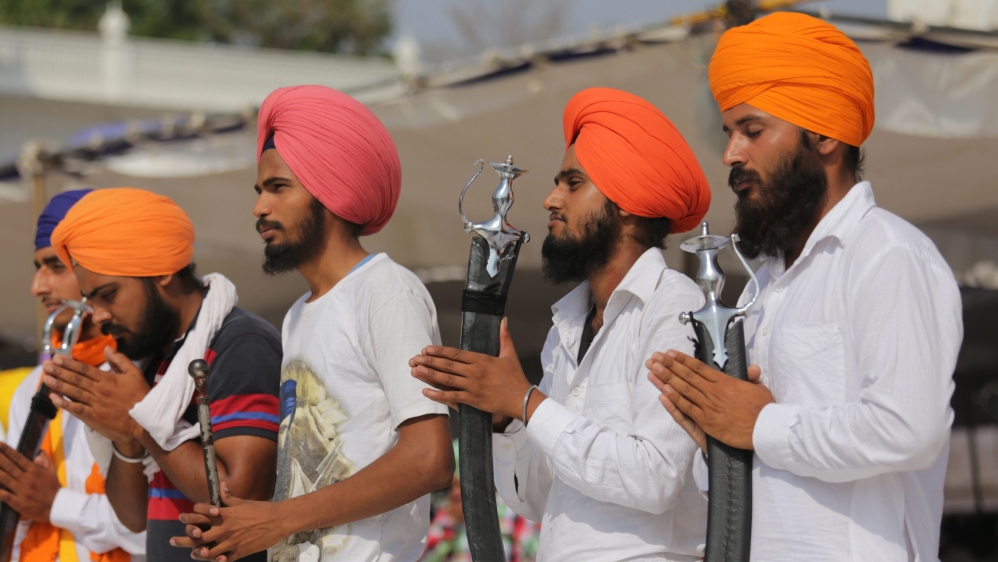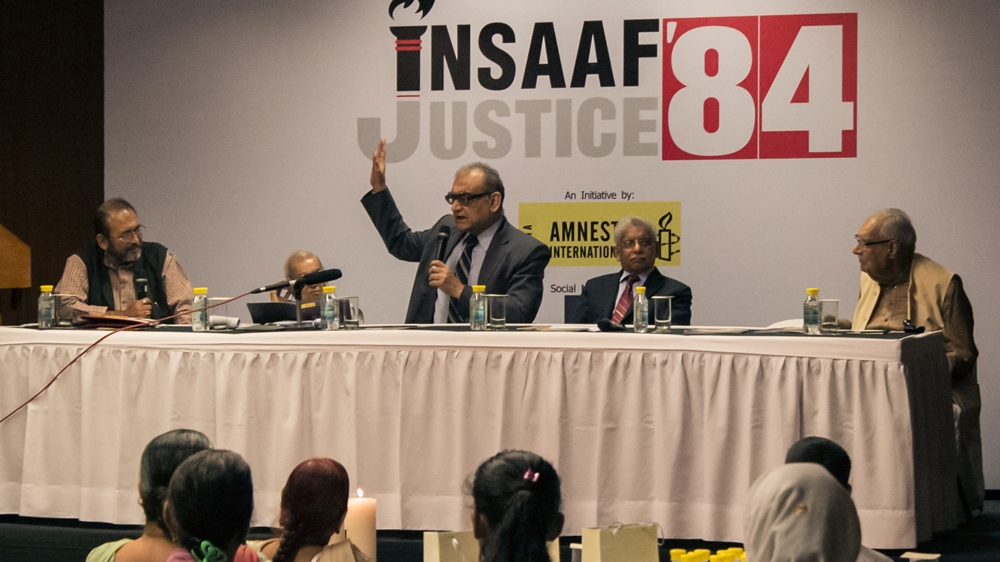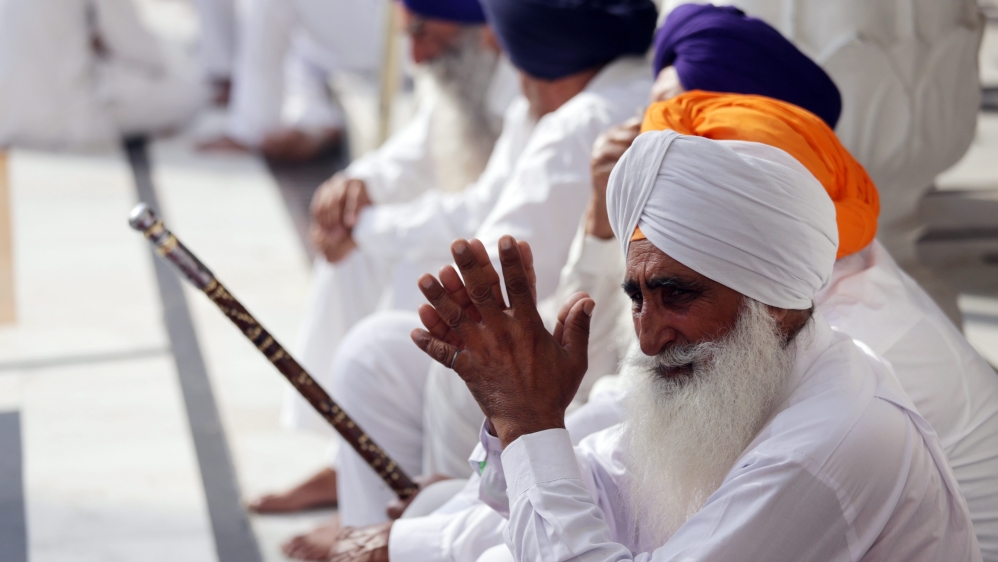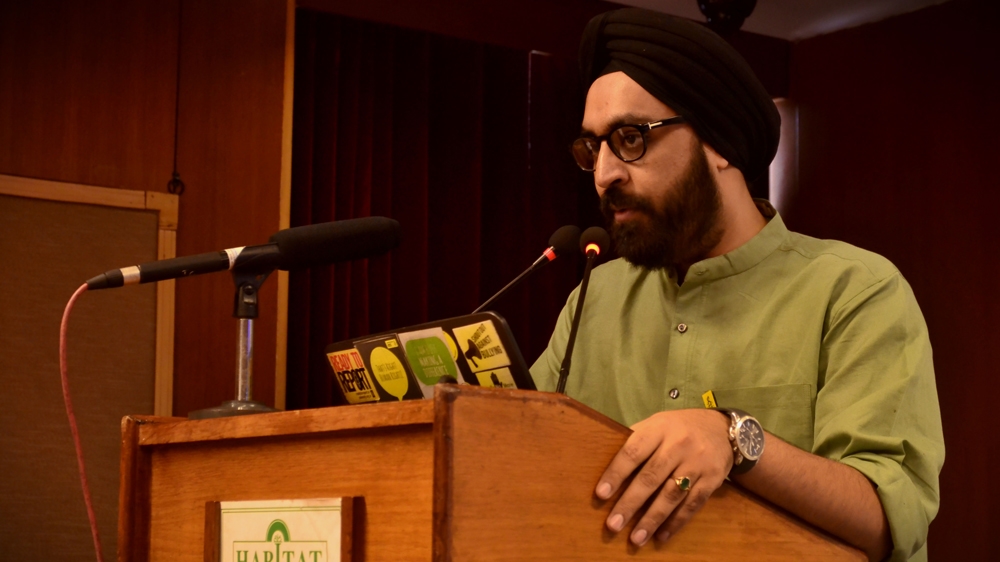“Get up and crawl back into the train quickly. If they notice that you’re alive, you’ll be stoned to death.”
Sixty-four-year-old Satpal Singh, a pharmacology professor at the University of Buffalo in New York state, vividly remembers the timely advice proffered by a kind man, which ultimately saved his life on the night of November 1, 1984.
Singh had just received an offer to start and head a new division at the Centre for Cellular and Molecular Biology in the central Indian city of Hyderabad.
While returning to Amritsar, in the northern Punjab state, from Hyderabad, the train made an unscheduled stop at a railway station close to the city of Bhopal.
A mob of nearly two dozen people barged into Singh’s compartment and beat him unconscious.
“Two army officers in my compartment assured that they would protect me, but nobody intervened,” Singh told Al Jazeera by phone from Buffalo.
Assuming that he was dead, his body was thrown on the railway tracks.
On October 31, 1984, Indira Gandhi, then India’s prime minister, was assassinated by two of her Sikh bodyguards, Satwant Singh and Beant Singh, in apparent retaliation for the Indian army’s action in June that year to flush out an armed separatist group led by Jarnail Singh Bhindranwale from the Golden Temple, the holiest place of worship for the world’s Sikhs.
The military operation, code-named Blue Star, claimed up to 700 lives, according to some estimates.
Following Gandhi’s assassination, attacks on Sikhs erupted across several Indian cities, including Delhi, Kolkata, Bokaro and Kanpur. At least 2,733 Sikhs were killed in Delhi alone in the carnage.
Nearly three decades later, as victims continue their battle for justice, the Indian government’s Special Investigation Team (SIT) has decided to reopen and examine 75 closed cases related to the riots in Delhi.
In the latest development, a Delhi court has set October 25 as the deadline for CBI, India’s top investigative body, to provide information on the status of investigation in a case involving the killing of three people in a Sikh gurudwara the day after the assassination.
Memories of the massacre
The 1984 killings began on the evening of October 31, spreading from New Delhi’s All India Institute of Medical Sciences (AIIMS), where Indira Gandhi’s body had been brought.
Mobs armed with weapons thronged the areas with a large Sikh presence and began looting and burning shops and business establishments belonging to Sikhs.
Members of the Sikh community were dragged out of their homes, beaten mercilessly and slaughtered in the four days that followed.
“My bhua’s [father’s sister] husband was burned alive with the petrol from his own motorcycle and left to die at the INA Bridge in New Delhi,” recalls Harinder Singh, an activist and educator.
“Later, someone picked him up from the bridge and took him to their house. He survived miraculously.”

Whatever the truth, Satpal Singh describes the police and army as “mute spectators” that November night.
“I could hear the police encouraging the mobs – ‘Kill all of them. They have killed our mother,’” he told Al Jazeera.
When the train made its next stop at Gwalior, where there is a large Indian army presence, Singh made a quick decision to get off and pleaded for help with the army officer.
However, he was turned away and told that the army had not received orders to protect civilians and that his best option would be to approach the police.
The officer at the police station advised Singh to take the next train to Delhi.
“I told the officer that by then I had a clear idea of the scene in Delhi, to which he said – Sardar ji [Sir], how can I change what’s in your destiny?” Singh said.
A compassionate senior army officer finally agreed to help Singh and took him to the Gwalior army base for two days, after which he went back to Amritsar.
Incidentally, the president of India at that time of the riots was a Sikh himself, Giani Zail Singh, a former Congress party politician from Punjab who was considered a trusted ally of Gandhi.
Speaking to Al Jazeera, Gurmeet Kaur, Zail Singh’s daughter, recalled: “My father was deeply perturbed by the riots. He tried calling the prime minister’s office, the Ministry of Home Affairs and other authorities concerned in an effort to stop the atrocities against innocent Sikhs. His calls were either not getting through or getting disconnected.”
Several witnesses told official commissions of inquiry that the police did nothing to stop the killings, while many actively participated in the massacre.
“Large crowds surrounded the houses of Sikhs, and I myself witnessed innocent civilians being burned alive,” recalls Satish Jacob, a journalist who reported on the riots in Delhi for BBC World Service.
‘The SIT is eyewash’
According to the Indian law, the government can appoint an inquiry commission consisting of one or more members for the purpose of making an inquiry into a matter of public importance within a stipulated time period.
At least 10 such inquiry commissions and committees were formed to examine various aspects of the 1984 massacre, including the role of police officers, to recommend measures for compensation and rehabilitation, and to determine the number of deaths.

The Delhi police had filed only 587 First Information Reports (FIRs), official complaints against the violence. Out of these, 241 cases were closed by the police, citing lack of evidence.
Four of these cases were later reopened and reinvestigated.
In February 2015, the Indian government constituted a three-member Special Investigation team to reinvestigate closed cases in the 1984 riots.
The team was given six months to complete their task and submit their report to the Ministry of Home affairs (MHA), which deals with matters of internal security.
In August 2015, the MHA extended the term of the team to August 2016.
“Out of the 75 cases that were to be reopened, 22 have been short-listed as it was felt that those cases had more ground for investigation. The advocates of these cases are working closely with the victims, and advertisements have been put up in the newspapers, calling out the victims to contact the SIT,” RP Singh, national secretary of India’s governing BJP, told Al Jazeera.
However, HS Phoolka, a lawyer for the families of several victims, told Al Jazeera that the investigations are being conducted in a shoddy manner.
“Initially, they said 75 cases and now only 22 cases are being advertised. Even in these cases, they have just provided the addresses of the complainants and want the victims to approach them. The police should go and record statements from the victims and eyewitnesses and visit the place where the incident has occurred,” Phoolka said.
“The SIT is eyewash. After one-and-a-half years, they have still not made any progress.”
Congress’s response
The GT Nanavati Commission, which was appointed by the Indian government in May 2000, stated in its 2004 report (PDF) that what had initially begun as an angry outburst soon turned into an organised carnage.
The commission reported that there was credible evidence against local leaders and workers of the then-ruling Congress party.
However, no recommendations were made for further action against many of them.
“As a result of not recording separate FIRs, not recording statements of witnesses and not investigating the cases properly, it has now become difficult for the commission to make any recommendation against many of the persons who have been named by the witnesses,” the report read.
Following political pressure, the CBI was later asked to reinvestigate some of the cases, after which it registered seven cases.

“Most of these commissions failed to do a good job. Whatever little they did, was also not implemented by the government. Efforts were taken at all levels to shield the perpetrators from the very beginning,” Phoolka said.
Manish Tewari, national spokesperson for Congress, which is now the opposition, defended his party, saying it has always condemned the violence of 1984.
“Those who become the target of such unwanted violence should get closure. In fact, the first judicial commission to probe the incident was appointed by us. Whosoever was responsible for perpetrating these riots should be brought to justice,” he told Al Jazeera.
“If there is any re-investigation, we will not stand in the way.”
‘A mockery of justice’
On June 23, Amnesty International India held a conclave in New Delhi to build pressure on the central government to deliver speedy justice.
“The impunity for the 1984 Sikh massacre has made a mockery of justice. The SIT provides a critical opportunity to set things right,” Sanam Sutirath Wazir, a campaigner and researcher at Amnesty International India, told Al Jazeera in an email.
A series of recommendations were made in the conclave related to effective investigation, comprehensive reparation and legal and policy reforms, to be submitted to the MHA.
For the victims, memories of the anti-Sikh violence remain raw despite the passage of time.
Over 1,200 families, live in cramped conditions in the densely populated so-called Widow’s Colony in southwest Delhi. The women living there lost most of the male members of the family in the 1984 riots.
“Those who have witnessed the horrors of the massacre still go through depression, while many had dropped out of school due to the trauma,” Phoolka, the lawyer, told Al Jazeera.
“Had they received timely compensation, it could have been directed for rehabilitation. Even if a few perpetrators are punished, it will send out a strong message that if anybody commits such crimes, the law will catch up with him someday.”
READ MORE: US Sikhs fight racism with PR campaign
According to Harinder Singh, the activist and educator, “A large segment of the generation that survived busied itself to create awareness of Sikhism. The closure awaits, though the spirit ascendant is visible.”
Following his narrow escape, Satpal Singh, the pharmacologist, decided to relocate to the United States with his family in 1985.
“I wanted to set up laboratories in India, but you can’t do that if you aren’t safe. I didn’t want to bring up my children in an atmosphere of fear,” Satpal Singh said.
“The judicial system, ethos and sentiment of hate in a country are factors that affect an attempt towards seeking justice. If they are conducive, justice will be done.”

This article first appeared on aljazeera.com

